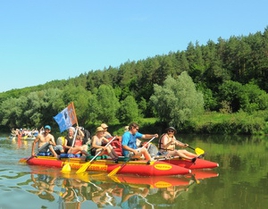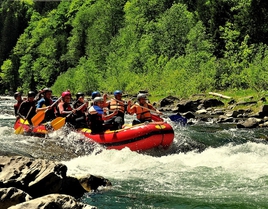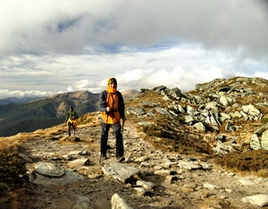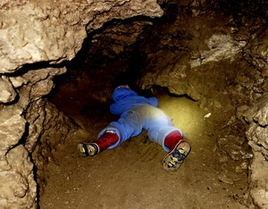Excursion to the cave Popelyushka
On the eve of St. Nicholas Day, we went to visit our friends cavers to Moldova and look at the cave Zolushka. We knew that this cave is famous for its large volumes and is one of the youngest caves.
So, we reached the Ukraine-Moldova frontier, the Mamalyga village for four hours. There were usual procedures of passing the frontier by pedestrians (stamping the passport for travelling abroad). The caver's house is situated in 1.5 km from the frontier post, so in order to save on the process of insurance execution on our bus, went there on foot.
We were greeted extremely warmly and our friends cavers offered us eat pasta with Ukrainian tushivkа (tinned stewed meat). An hour for a lunch and preparation and we went to the entrance of the cave.
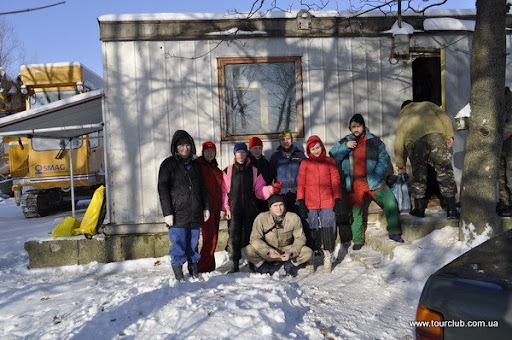
The cave's entrance is located almost on the border. The cave is stretched by two almost identical in length "sleeves": one is under the Ukrainian territory and the other is under Moldavian. There is a huge active gypseous quarry near the entrance to the cave . Because of this quarry the cave is open and available for discovering and research. The cave's entrance was found during the quarrying in 1977. After some time the quarry has "moved" farther from the entrance, and processed rock was covered on place of primary works. The entrance was fortified from filling by six square concrete cylinders.
While caving tour in Ukraine we passed a quarry which dimensions are impressive. Lucky we were that a lot of snow fell at night and froze. Otherwise we would stick up to ankle in a swamp. At the top of the quarry, 200 meters from the edge in the planting of prickly acacias is the concrete construction with a metal hatch. We should go there.
We went the ladder up to 32 meters down. The entrance part of the cave is low and narrow. The local cavers call it "narrow hole" and joke that "narrow holes" in Zolushka cave are the ways, where it is impossible to go though swinging widely the barrel beg. Coming out of the entrance part, we realized that it's true.
The dimensions of the cave’s cavities are impressive, stunning, captivating. It seems that you are in the country from a book "7 underground kings" by O. Volkov. You can run with widely outstretched hands, ride a bicycle, jump ... "There is never enough light for Zolushka cave" says our guide and tells us that specially for photosession the accumulator and huge lights (spotlights) were carried into the cave. The height of one of the first rooms, Perspektyvnyy, is 9 meters, and there are even higher. Some rooms are really large, but all their greatness is hard to comprehend because of the dividing by columns. One of the largest halls is the hall of Chernivtsi cavers and it has incredible dimensions: length - 172 m, width - 60 m.
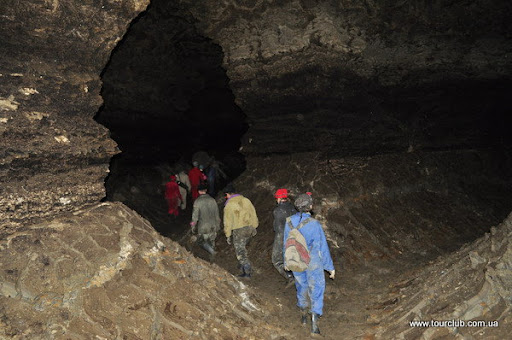
Among the large volumes it is worth to pay a special attention to the mines. The mines differ from rooms by the following characteristics: they begin on the level of usual rooms and then they go lower with plumb cylinder walls to a depth of several tens of meters with a diameter of 10 meters. One of the mines we have seen was 22 m in depth and around 9 m in diameter.
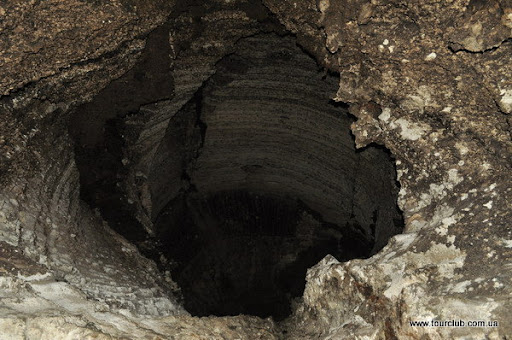
Another cave’s miracle is lakes. They affect both size and depth. Some of them are spilled on the bottom of the huge halls or mazes, and its depth sometimes exceeds 10 meters. An extremely powerful flashlight is needed to see another "lakeside" of such kind of lake. We tried to make photos of the lakes “Vystavochne” and “Nautilius”, but it is difficult to convey this amazing volume on the photo.

We have never seen so much cracked clay. The floor of some rooms is completely covered with a layer of clay cracked half a meter deep. Almost every room contains the clay areas. All clay is deeply cracked. The presence of such cracked clay indicates that there was water in the cave quite recently. And it's true.
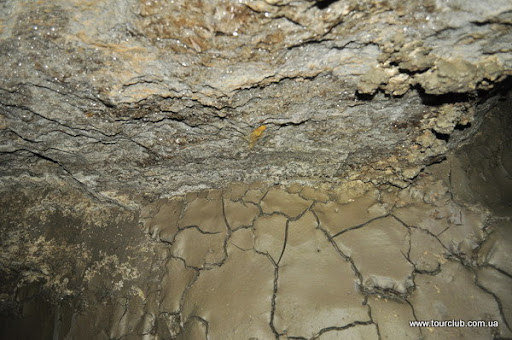
The pumps were being run only in 1977 with the opening of the cave. They pumped water for queer development, which partially dried the cave and allowed exploring it. The cavers are worried that in case of termination of pumps activity the cave can be flooded again. This cave is the youngest among others because of its durable flooding. The water from other caves got out a few hundred thousand years ago and during this time the caves has dried; a large number of crystals were formed on the walls. The so-called primary formations (halls, galleries) are dominated in this cave (Zolushka). Perhaps the formation of such large cavities can be explained by the durable flooding and washing out the gypsum.
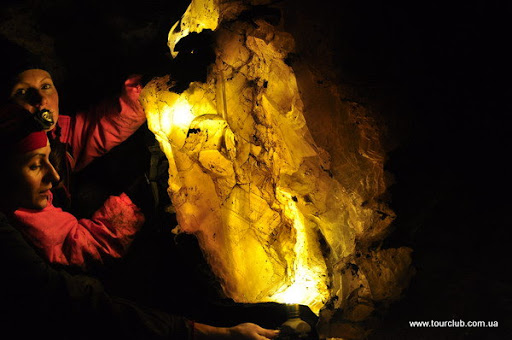
There are a lot of crystal plafonds despite the lack of the usual for other caves wall crystals in the cave. The cave still amazes with its size even in this "category". One of these plafonds is over 1.5 m height. There are also very specific stalactites in the cave. They look like hair, light brown hair with height up to 5 sm on the dark ledge of the walls.
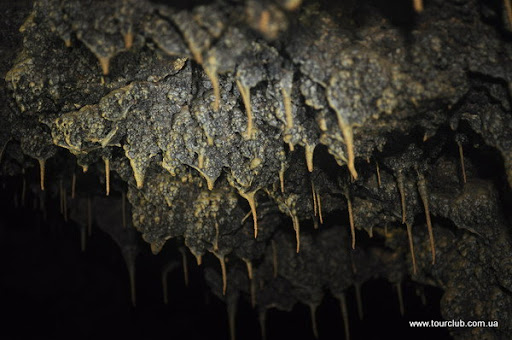
There is the last one interesting and even creepy fact about the cave Zolushka. The carbon dioxide is accumulated here in the underground strata. This fact has a tragic proof. Two guys decided to try themselves as cavers in the nineties, when there were no doors and the cave has a free access. But it did not last long. They were poisoned and died for a short time, without feeling the smell. Today the gas accumulates only in remote areas of the cave, and the researching cavers have created the following recipe for themselves: the back of the head starts to ache after 4-5 hours passed, a little while you can feel the pain in the temple, and exactly this kind of pain is the last acceptable symptom. It is necessary to go outside immediately in this case.
Our tour was ended after 4 hours passed. We were dirty and happy to return to the house. During the next hour we have passed the frontier for the second time per day and went home.
A great thank to Moldovan cavers for conducting the tour.
Photos from the tour
